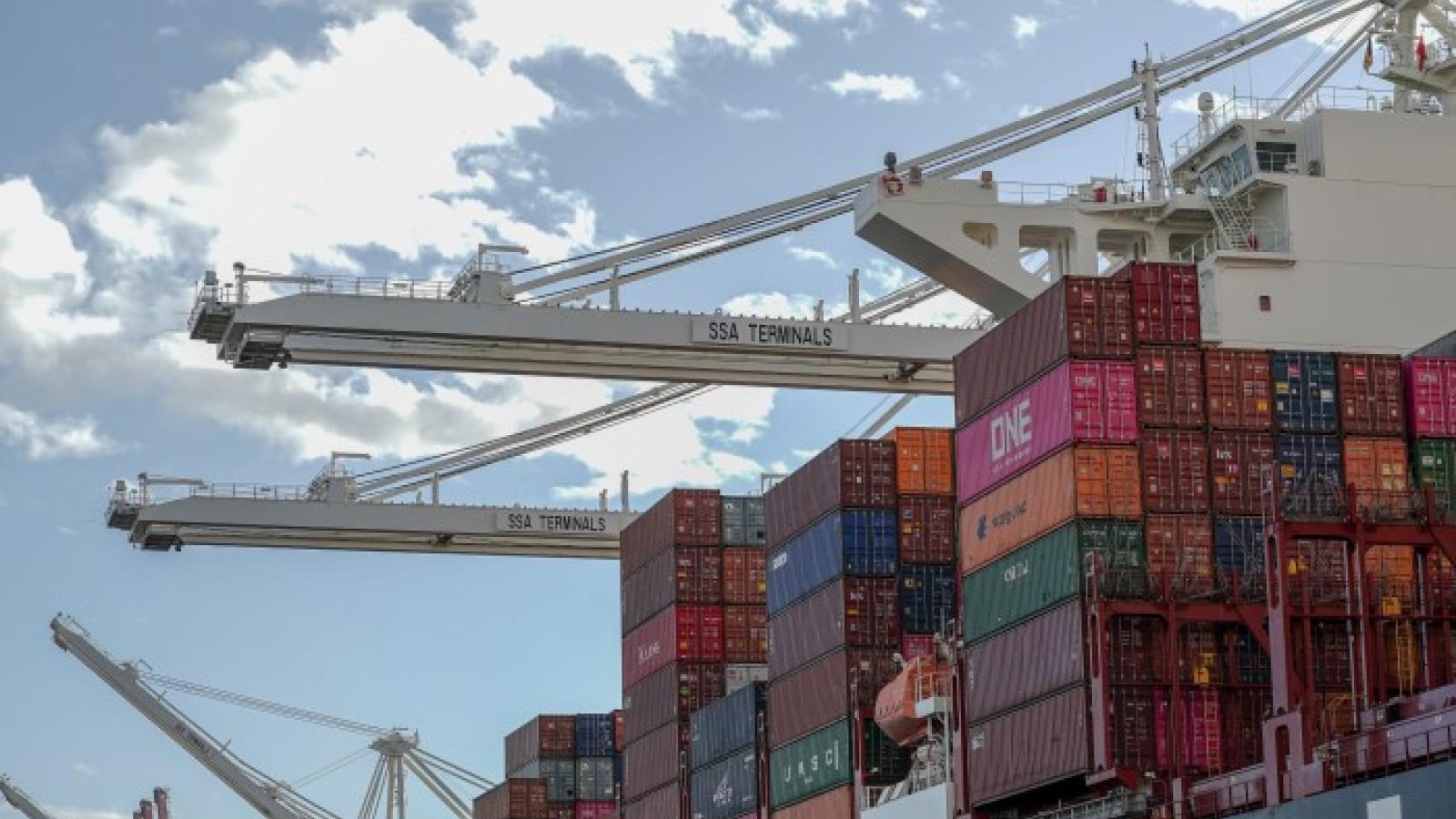
THE Alliance’s suspension of a trans-Pacific service next month adds to the raft of canceled sailings and other service changes that ocean carriers have planned now through well into October as they attempt to better balance ship supply with import demand.
Hapag-Lloyd on Wednesday said the Pacific Northwest 3 (PN3) service it operates under its alliance agreement with Ocean Network Express, Yang Ming and HMM will be suspended following an Oct. 8 sailing from Hong Kong due to the “present market situation.” In place of the PN3 service, the carrier said its PN2 service would add calls to the Asian ports served by the PN3.
THE Alliance has already announced a series of service changes in September. Over the next three weeks, it plans to blank 12 sailings – two to the Pacific Northwest, five to Southern California and four to the US East Coast – accounting for nominal capacity of 119,000 TEUs.
The 2M Alliance partners Mediterranean Shipping Co. (MSC) and Maersk also announced this month that 11 trans-Pacific voyages scheduled between Sept. 25 and Oct. 9 will be blanked, accounting for 108,000 TEUs in nominal capacity. Those include four services to Southern California ports, six to the US East Coast and one to the Gulf Coast.
In addition, schedules from carriers of the Ocean Alliance show changes to sailing frequency or outright cancellations on 17 services through the end of October with nominal capacity of 146,000 TEUs. Cosco Shipping and Orient Overseas Container Line will offer fortnightly, in place of weekly, sailings on their 5,800-TEU Dahlia service to the Pacific Northwest through October. Evergreen Marine will also offer biweekly sailings on its 12,000-TEU Southwest Express Service to Los Angeles through October in place of weekly service.
Blankings will ‘get worse’
With Asian imports to the US down 20% year-to-date, the trans-Pacific is bearing the brunt of service cuts. Maritime consultancy Drewry’s canceled sailings tracker indicates that the trans-Pacific will account for 59 of 104 canceled sailings worldwide originally scheduled between mid-September and the end of October.
Drewry added that with service cuts and schedule changes coming fast, “shippers and (beneficial cargo owners) are advised to remain attentive, as these developments could potentially result in schedule disruption and delays in cargo movements.”
An import manager who oversees 10,000 FEUs in Asian imports, primarily through West Coast ports, told the Journal of Commerce she is seeing about 5% of her inbound volumes get rolled to later sailings due to the service changes. The source, who did not want to be identified, expects the increase in blank sailings through October will mean that shippers who have booked cargo for sailings that month will likely face more delays as capacity tightens.
“Some of the carriers are blanking a lot,” she said. “The second half of September is tough, but the first half of October is going to be a mess. It’s going to get worse before it gets better.”
James Caradonna, vice president at MCL-Multi Container Line, told the Journal of Commerce that the capacity cuts – most of which are in response to China’s Golden Week holiday – have managed to stem further slides in spot freight rates in the near term, while keeping ships full.
While spot rates are very fluid, he said current market levels of $1,600 to $1,900 per FEU to the US West Coast at least allow the carriers to break even, particularly as fuel costs begin to rise.
“Those rates are not bad in a historical context,” Caradonna said. “I think many carriers would be okay with having rates in that range.”
He estimates that vessel utilization to the Southern California ports is over 90%, with some cargo being rolled to the next available voyage, as schedule changes and blank sailings prompt shippers to go with the fastest and highest-capacity ocean services available. In contrast, load factors on ships to the Pacific Northwest are around 80% as cargo flow at Canadian ports returns to normal following labor unrest in July.
“Load factors to Southern California have not been terrible,” Caradonna said. “Capacity has been more constant to the Pacific Southwest than the Pacific Northwest.”
Vessels going to the US East Coast are also likely seeing utilization around 80% or sometimes lower, according to Caradonna. He said the lower usage reflects a shift of some import cargo back to the West Coast after the ratification of the longshore labor contract and concerns about delays at the Panama Canal. Spot rates to the US East Coast have fallen harder than those to the West Coast, and now hover around $2,300 to $2,500 per FEU.
Source from JOC.com
